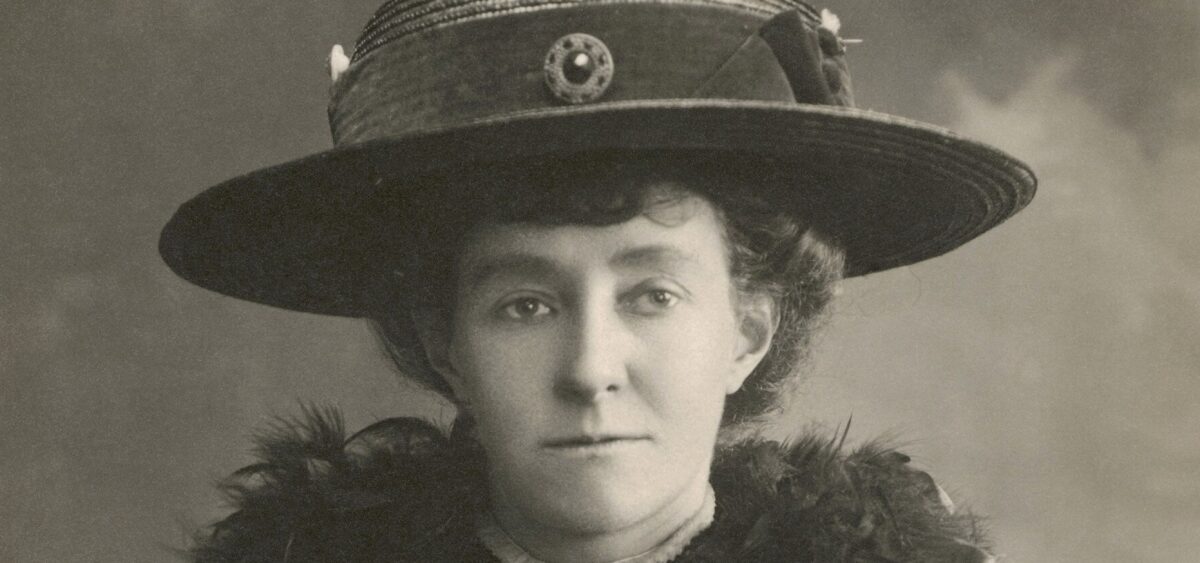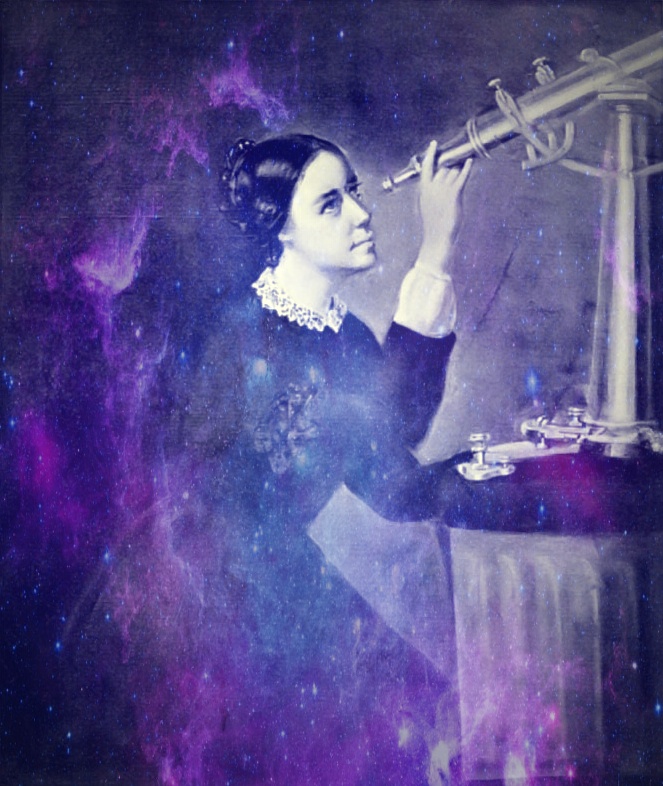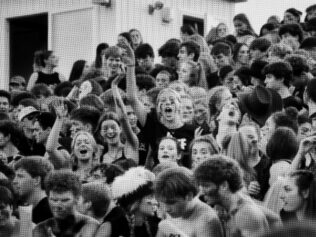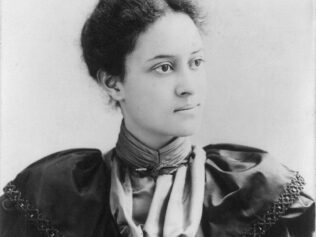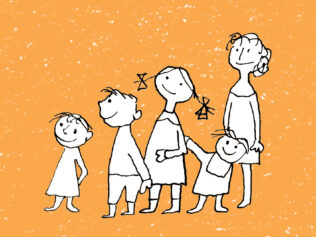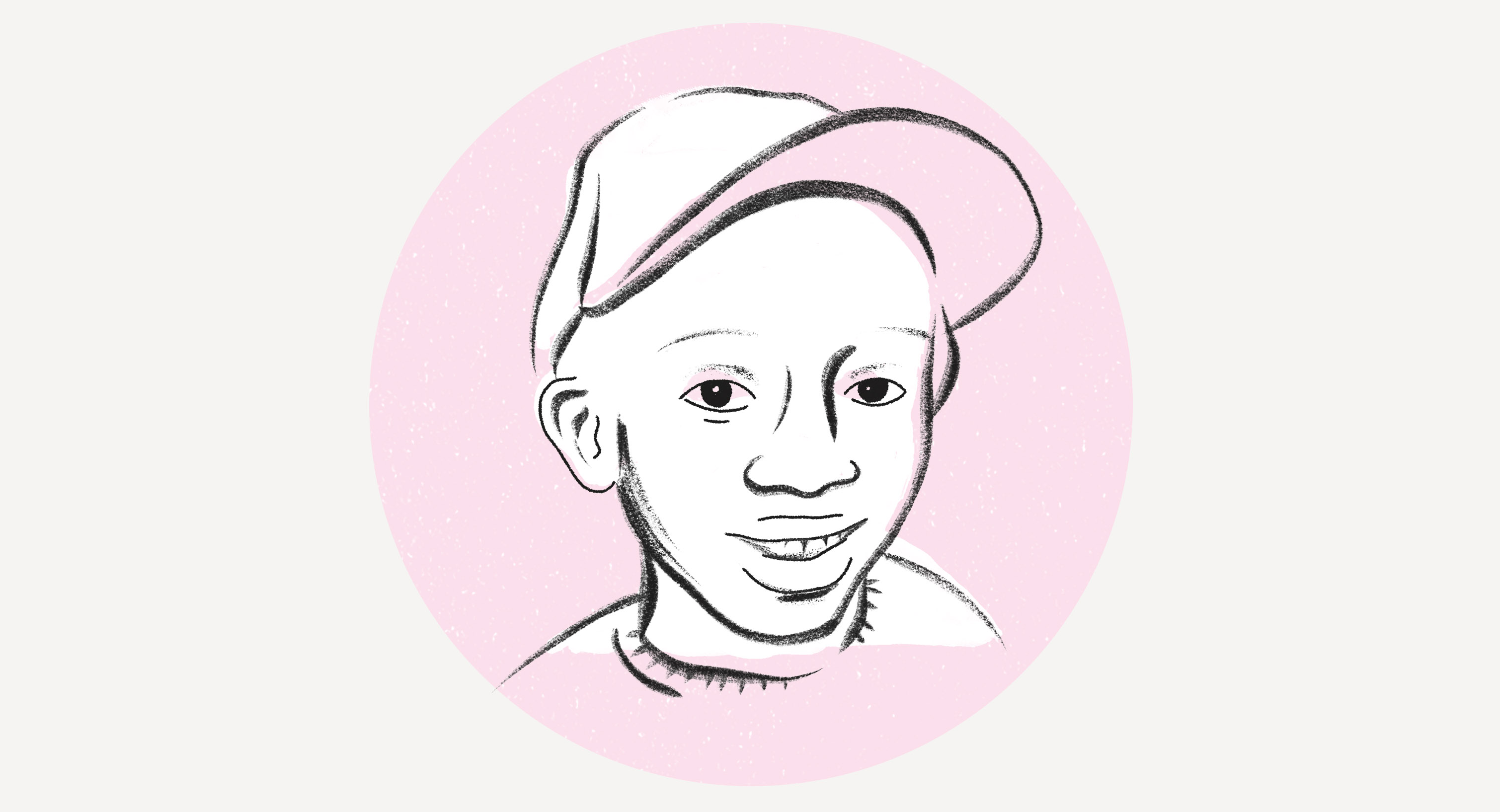
Warrior with a PhD
Huey P. Newton
The logo: a bird of prey readying for launch. The image: black leather overcoats, black berets perched atop afros, a gun slung over the shoulder. The Black Panthers didn’t want to be sheep. They’d had enough of Martin Luther King’s peaceful campaigning. The racism and brutality of the police demanded more decisive action.
The Black Panther Party was founded in 1966 in Oakland, California. The founding fathers were Bobby Seale (who became chairman of the organization) and Huey Percy Newton (who got the Ministry of Defence ‘portfolio’). Self-defence was one of the goals of the party – since the law allowed the carrying of arms, an armed group of African Americans began to patrol the streets of the city. What mattered was a show of strength. But most important of all was the famous 10-point programme of support for the Black community. Among other things, the Panthers demanded freedom, jobs, education, exemption for African Americans from military service, and an end to police brutality. They set up food and clothing banks, housing associations and also invented the ‘Free breakfast for children’ programme.
Huey P. Newton knew very well what it felt like to be hungry and persecuted. He was born in 1942 in Monroe, Louisiana, a parish with an infamous history. Between 1877 and 1950, 37 Black people were lynched here. This was why the eight-year-old Huey and his family moved to Oakland. Growing up, he was ashamed of his skin colour and the white community did everything to ensure that this shame was firmly instilled in people like him. “During those long years in the Oakland public schools, I did not have one teacher who taught me anything relevant to my own life or experience. Not one instructor ever awoke in me a desire to learn more or question or explore the worlds of literature, science, and history. All they did was try to rob me of the sense of my own uniqueness and worth […]”, wrote Newton in his autobiography Revolutionary Suicide.
However, he carried on studying. During his studies at the University of California, he completed the compulsory reading of revolutionary literature: the works of Marx, Lenin, Mao Zedong, Che Guevara and Malcolm X. In 1980, he gained his PhD in social philosophy from Santa Cruz for his thesis “War Against the Panthers: A Study of Repression in America”. He was keenly aware of the importance of knowledge. In the 1960s, when recruiting new Panthers, he argued that Black people were being persecuted in part because they didn’t know about the social institutions that could work to help them and they didn’t know their rights.
And these rights were regularly breached. When, in September 1968, the head of the FBI, John Edgar Hoover, declared the Black Panthers to be the greatest threat to national security, the goal of the authorities was to weaken and discredit the movement. The FBI provoked shootings involving the Panthers. It conducted illegal raids on their headquarters and party members were even murdered. Newton himself was caught up in a shooting where a policeman died. Initially, he was sentenced to 15 years in prison, although the Alameda County Superior Court eventually dismissed the charges. Before this happened, the Panthers, supported by the largely white Peace and Freedom Party, launched the massive ‘Free Huey!’ campaign. In 1970, a free Newton fulfilled his dream of flying to the Peoples’ Republic of China, where he was greeted enthusiastically by crowds waving Mao’s “Little Red Book”. However, he didn’t get to meet the Chairman.
By this time, the Panthers were already in crisis. After Martin Luther King’s assassination in 1968, some of the activists, led by Eldridge Cleaver, wanted violent retaliation for the attack, while others preferred to focus on social activities. Newton represented the latter group and the media avidly reported his conflict with the leader of the radicals. By then, however, he was already plunging into the darkness of drug addiction, bouts of aggression, threats and drug trafficking. In 1982, he disbanded the party after being accused of embezzling $600,000 of state support meant for a school founded by the Panthers in Oakland. He admitted to stealing $15,000, for which he was sent to prison for six months.
He died on the street. On 22nd August 1989 he was shot by a member of the radical Black Guerrilla Family, who claimed that he had abandoned his prison comrades. As he was dying, Newton is said to have cried: “You can kill my body, but you can’t kill my soul. My soul will live forever!”
He was right. The figure of the controversial co-founder of the great movement has survived as a symbol of the struggle for the equality of African Americans. He lives on in dozens of songs. Tupac Shakur and Kendrick Lamar, among others, have rapped about him.
Suffragette
Emily Davison
In one photograph she looks very noble: carefully-styled hair, a hat and, in accordance with the fashion of the day, a high-necked dress, buttoned tightly under the chin. The only hint of frivolity is a big feather boa. But anyone who judges on appearance alone would be surprised. Emily Davison’s true character is shown in another photograph: toga, cap and that hard, proud stare from above. No sign of a smile, no trace of self-admiration. This suffragette is not looking for cheap adulation.
She was born on 11th October 1872 in London. She studied at Royal Holloway College and St. Hugh’s College, Oxford, where she read literature. She passed her finals with first class honours, but at that time Oxford didn’t award degrees to women. Over the next few years, she studied at the University of London, and eventually received a degree from them.
This made no odds, given that women in Britain didn’t have the right to vote at that time. In 1903, a mother and daughter duo, Emmeline and Christabel Pankhurst, founded the Women’s Social and Political Union (WSPU). Davison joined three years later. At the same time, she was teaching at a school and at the Workers’ Educational Association. In time, however, the fight for the right to vote became her main mission. It required radical action: stone throwing, setting fire to things (e.g. post boxes) and hunger strikes. Emily was arrested nine times for her activities. She went on hunger strike seven times. This form of protest initially led to early release; the authorities didn’t want to be responsible for prisoner deaths. Later on, however, the women were force fed. When arrested in the autumn of 1909, Emily tried to avoid this and barricaded herself into her cell. At this, the guards flooded her cell with water. A year later, she again found herself behind bars, this time for breaking windows at the House of Commons. Two years later, she landed in prison again for assaulting a man who she had mistaken for David Lloyd George, the Chancellor of the Exchequer at the time.
Force feeding was a brutal form of torture used widely on the arrested suffragettes. Davison believed that the authorities could only be stopped with the sacrifice of a life. So when she was put under arrest, she tried to throw herself down the stairs, but this only ended in bruising. The suffragette’s death happened not long after. On 4th June 1913, during the Epsom Derby, Emily ran out in front of King George V’s horse (ridden not by the King, but by his jockey, Herbert Jones). She was holding a WSPU banner. The speeding horse crashed violently into the woman and she never regained consciousness. She died four days later.
As for Emily’s motives, opinion is divided. Some regard her desperate act as suicide. Others believe that she just wanted to run across the racetrack or attach the WSPU ribbon to the horse. That might well have been the case; a return train ticket was found on her body. Davison’s funeral became a gigantic demonstration by women fighting for the right to vote. 5000 suffragettes and their supporters took part. Davison became their heroine, a martyr for the movement. She was buried, along with the suffragette flag, in Northumberland. The epitaph on her headstone sums up her whole life: Deeds not words.
Five years later, in 1918, Britain gave partial voting rights to women and they gained the full right to vote in 1928.
The man who brought spring
Ales Bialatski
In 2012, Ales Bialiatski, a Belarusian activist and head of the Viasna Human Rights Centre [viasna refers to the season ‘spring’ in Belarusian – ed. note], was the main protagonist of the 13th Amnesty International Letter Writing Marathon. Across Poland, most people chose to write about him. A mural calling for his release was even created in Gdańsk. At that time, Ales Bialiatski was in a labour camp in Bobruisk. He had been sentenced to four-and-a-half years there. In addition, the court had ordered him to pay the state 757.5 million Belarusian roubles (approximately $90,000). Bialiatski was supposed to have concealed his income and not paid tax on over €560,000 transferred to his bank accounts in Poland and Lithuania. The activist pleaded not guilty. He explained that the inflows to the foreign accounts was not his personal income, but financial support from international foundations for the defence of human rights.
The Polish Prosecutor General’s Office played an infamous role in Bialiatski’s arrest, as did the Lithuanian Ministry of Justice, which provided the Belarusian authorities with information about the bank accounts. The apologies of Radek Sikorski, Poland’s foreign minister at the time, didn’t help – the hard labour camp became Ales’s reality for almost three years. Letters of support from all over the world, including Poland, helped him survive the isolation (other prisoners were not allowed to talk to him) and the strict regime. “Hang in there!” “Be strong!” Ales read. He received more than 40,000 letters in total. Meanwhile, President Lukashenka was being petitioned by the EU and civil liberties organizations, including Amnesty International, to release Bialiatski. These actions brought results. In June 2014, the Belarusian activist was released early and in December 2015, he himself participated in the Letter Writing Marathon organized by the European Solidarity Centre in Gdańsk.
Born in 1962, by the time he was a teenager it was clear Bialiastki was going to be a dissident. During his studies (Belarusian and Russian philology at Gomel University) he openly used the Belarusian language, which even today is considered an offence against the authorities. He printed leaflets calling for Belarusian independence. After his studies, he got work as a teacher and also as a researcher at the Museum of Belarusian Literary History. From1988, he became involved in the activities of the Belarusian People’s Front. But he is best known for his work with the Viasna Human Rights Centre, created in 1996. The organization has provided legal and material support for thousands of people persecuted by Lukashenka’s government.
The Belarusian authorities have repeatedly persecuted Ales Bialiatski. In contrast, the Western world has twice nominated him for the Nobel Peace prize.
The education girl
Malala Yousafzai
She was barely 15 years old when she was attacked by the Taliban as she returned home from school on the bus. This was on 9th October 2012 – the girl was shot in the neck and head (the bullet passed right next to the brain). Two of her friends were also injured. What had Malala Yousafzai done to offend the extremists? She simply wanted to learn. And she wanted all Pakistani girls to go to school. This couldn’t have pleased the Islamic extremists from the Swat valley where Malala was born and raised, particularly since the teenager had been writing on the subject since 2009 on her blog (under the pseudonym Gul Makai). She recounts that it was increasingly difficult for her to go to lessons and that, after banning education for girls, the Taliban were closing down schools. She was demanding the right to access education and to decide about her own future. This was enough to become their enemy. The Taliban accused her of spreading the Western lifestyle and of indecent conduct. They only got their way for a short time; after the attack, Malala left Pakistan for England. Her extensive injuries required intensive treatment and rehabilitation. Once recovered, the young activist remained in Britain.
However, Malala’s story and the question of girls’ education became a big issue around the world. The bravery of the young Pakistani girl was recognized by numerous institutions. Harvard University gave her an award; the European Parliament awarded her the Sakharov Prize for defending human rights and the freedom of thought. But she was awarded the highest honour when, in 2014, and almost exactly two years to the day after the attack, Malala Yousafzai became the youngest ever winner of the Nobel Peace Prize. In interviews, she says that she wasn’t particularly nervous when she gave her speech at the United Nations. She felt that she was the voice of all children who are denied access to education. She appealed to adults – world leaders, teachers, parents – to change this. She underlined that her father had particularly encouraged her to study. He believed in equality for women. In contrast to the meaning of his daughter’s name (‘steeped in sadness’), he insisted that Malala would be as free as a bird.
The Nobel prize winner is still studying. She did her A-levels in Birmingham and is studying at Oxford. She works for a global campaign to educate girls. She is co-founder of the Malala Foundation. She has written a children’s book about her life called Malala’s Magic Pencil. In the book she writes: “One child, one teacher, one book and one pen can change the world.” It would be hard to find a better time to be inspired by this.


